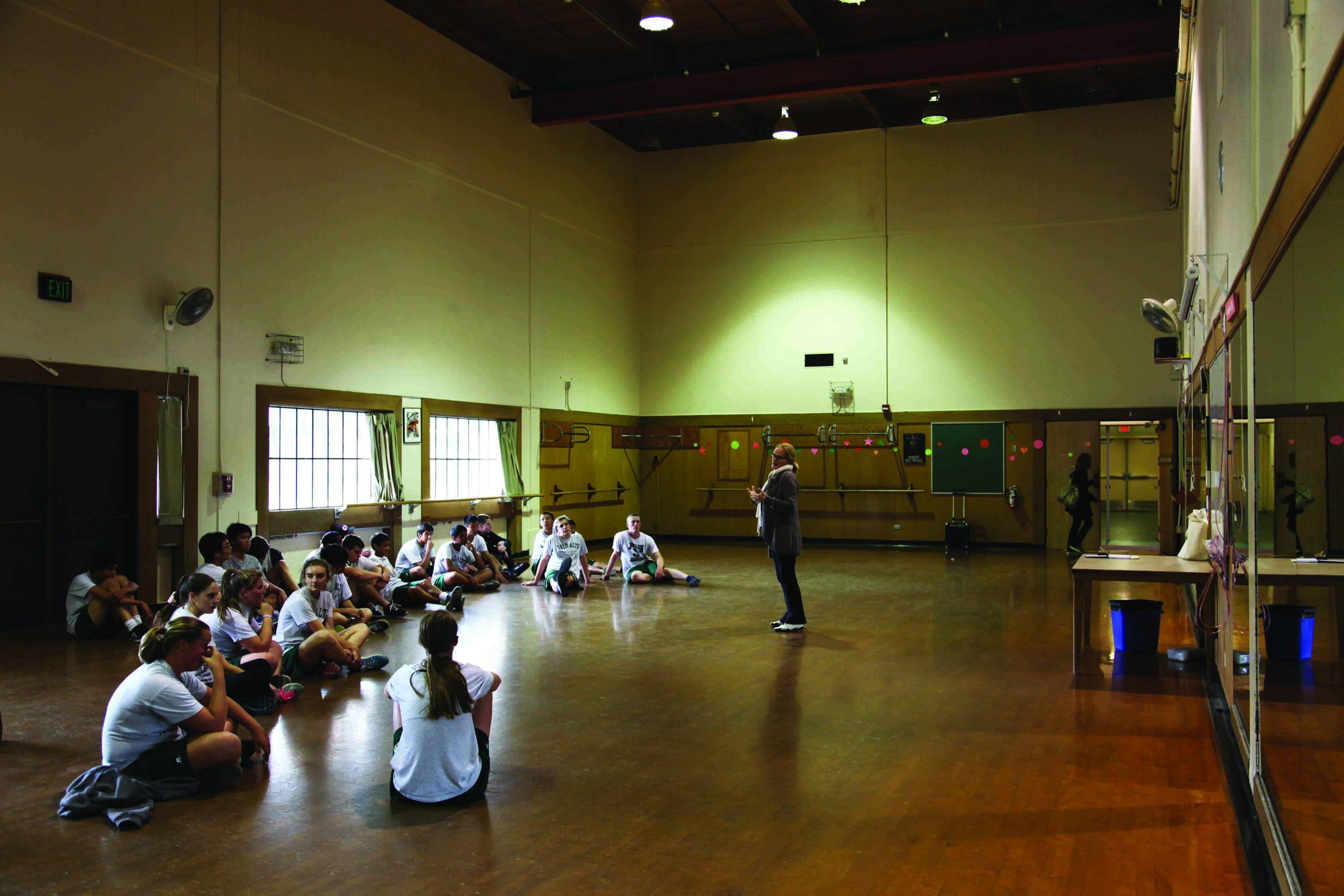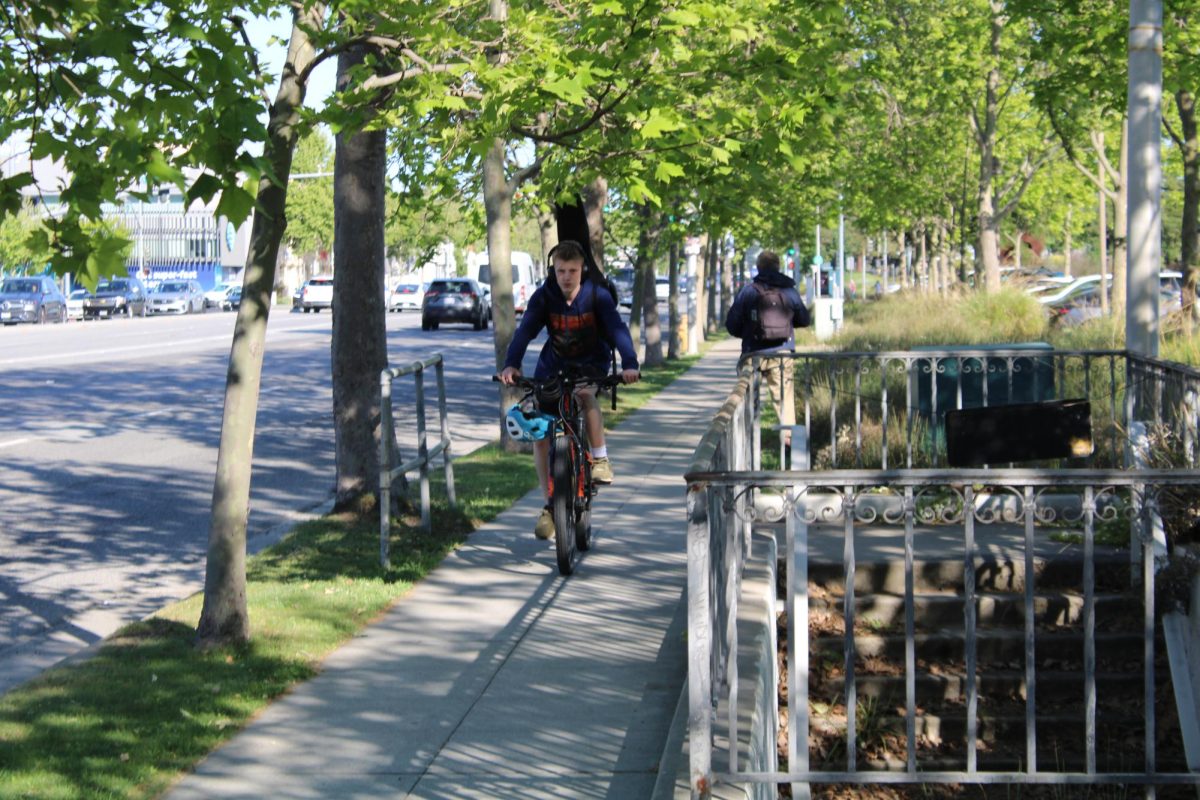Current Palo Alto High School science Instructional Supervisor Josh Bloom hopes to move towards bringing mindfulness to Paly as next year’s Teacher on Special Assignment (TOSA) for Social Emotional Learning.
Bloom believes that mindfulness will greatly benefit the student body, and hopes to follow in the path that Henry M. Gunn High School has taken with respect to mindfulness and intraspection, Gunn’s Student Executive Council recently voted to introduce a mindfulness curriculum to physical education (PE) classes in the upcoming school year.
Gunn’s mindfulness curriculum will be taught by the national organization Youthful Empowerment Seminar (YES!). According to the YES! website, the curriculum strives to lead students in exercises, deep breathing and social lessons, including conflict resolution and management of different forms of stress. A Palo Alto Online article on Gunn’s decision to include mindfulness detailed that the 30-minute sessions will be delivered over four to five weeks in PE.
Bloom wants all of Paly to have access to the stress-relieving tools that YES! provides.
“There are tools that all of us can learn to help manage … and decrease that stress in our lives,” Bloom said. “Part of that has to do with increasing [our] level of self-awareness, including an awareness of our thinking and our emotions.”
Bloom will attempt to create environments where students can reap the benefits of self-awareness, possibly in PE classes and advisory. He mentioned PE as a place where students already learn about physical health and should learn more about emotional health.
Paly PE teacher Sheri Mulroe also sees mindfulness as an important tool for students and has currently made arrangements for Palo Alto Medical Foundation (PAMF) instructors, including mindfulness instructor Clia Tierney, to lead classes in mindfulness exercises.
“[The PAMF instructor] is going to come every [seven period] day until school’s out,” Mulroe said. “Their hope is then to bring it to more of the [PE] classes. They are working on a proposal to bring to the district.”
While Mulroe is in support of formally bringing mindfulness to PE classes, she noted that many teachers already implement meditation in their classes, and that self-awareness should not be strictly limited to PE — teachers of other subjects should adapt activities which promote mindfulness as well.
“It really is important that [the school knows that] it’s happening in other classes too, and it doesn’t have to be in [PE],” Mulroe said. “There’s not a particular way you need to be in order to practice mindfulness, so any teacher can do it, in any classroom.”
In accordance with Bloom’s and Mulroe’s views, many students think that the option of having the self-awareness program in PE is beneficial for their mental health.
Freshman Rebecca Young remarked that such a program would significantly improve the PE experience.
“I think right now people look at PE as something [they do not] look forward to or … want to do because it’s not relaxing at all, and it doesn’t help,” Young said. “I think [the program] would help us look forward to all of our classes more and make [us] feel more awake for the rest of the day.”
However, others view the integration of mindfulness into school curriculum not as a benefit, but instead as a potential time-waster.
Freshman Layla Jiang mentioned that mindfulness would be unnecessary and difficult to facilitate successfully.
“I feel like maybe some students wouldn’t take it seriously, just because people don’t really take PE as a serious class in the first place,” Jiang said.
Similarly, junior Andy Kotik said that the exercises introduced would not be carried into students’ everyday lives.
“It would be good to [teach mindfulness], but [students] wouldn’t do it afterwards,” Kotik said.
Despite the criticisms, Bloom wants to seamlessly incorporate a balanced dose of mindfulness into students’ school lives.
“We always talk about eating well and exercising and getting enough sleep,” Bloom said. “All of those are just simple practices and habits, and I see mindfulness and meditation as something that is very simple and very much related to that — it’s a practice and habit that makes us healthier.”
With these ideas in mind, Bloom hopes to implement major changes to Paly’s culture in order to help the community reassess student well-being.









